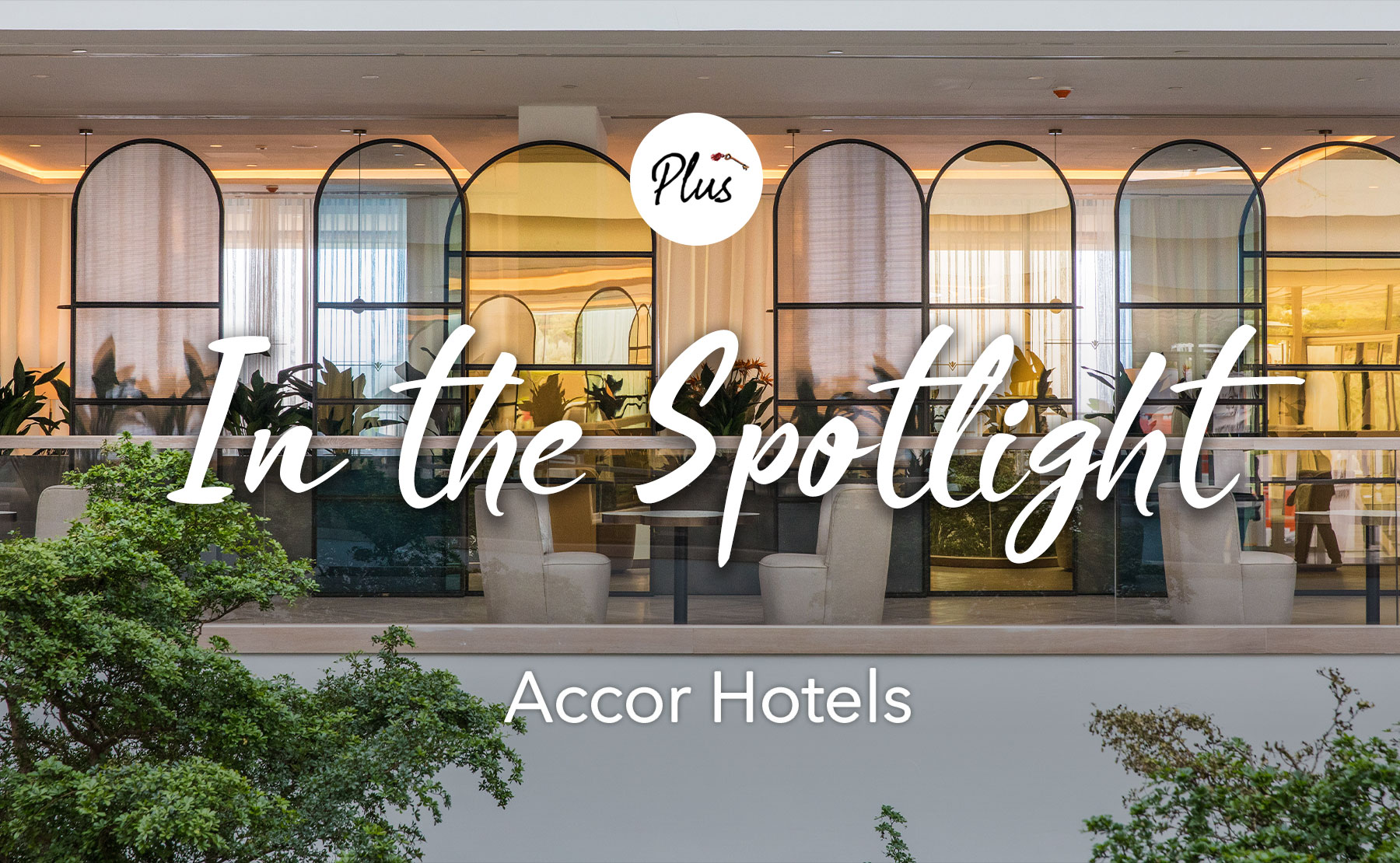
Click on the hotels below to see the perks and privileges they’re currently offering. Click here to learn more about Tablet Plus.
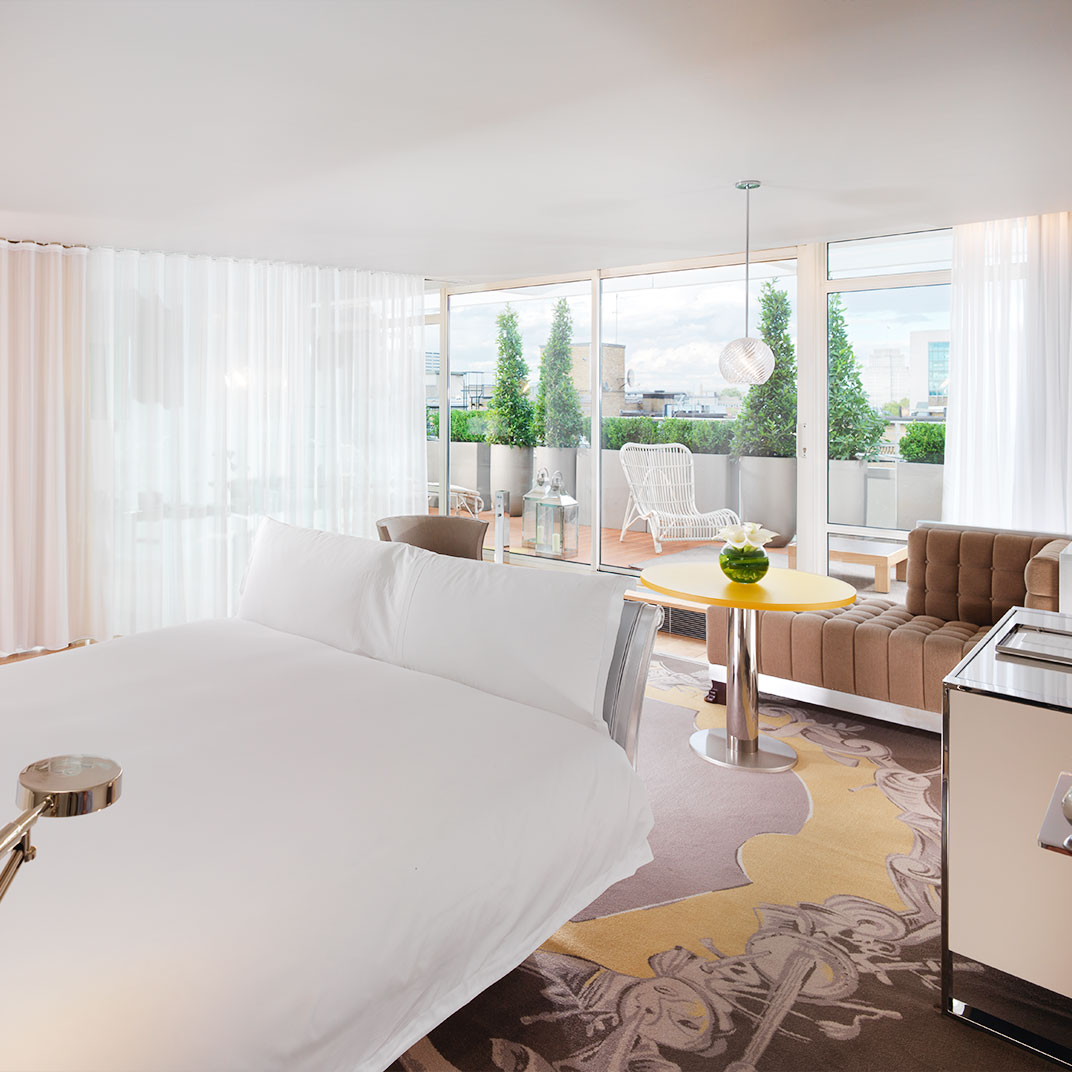
Sanderson
London, UK
Though a rated historical building, the Sixties office block that housed the Sanderson fabrics company is not the most elegant facade for a stylish boutique hotel. Fortunately the interiors find Starck and Schrager in rare form, raising their game a bit to stand out in this most competitive of hotel markets. Though constrained a bit by the building’s landmark status (right down to the name, which was the path of least resistance considering the old Sanderson sign had to stay) they have created what may be their partnership’s most urbane and elegant environment yet.
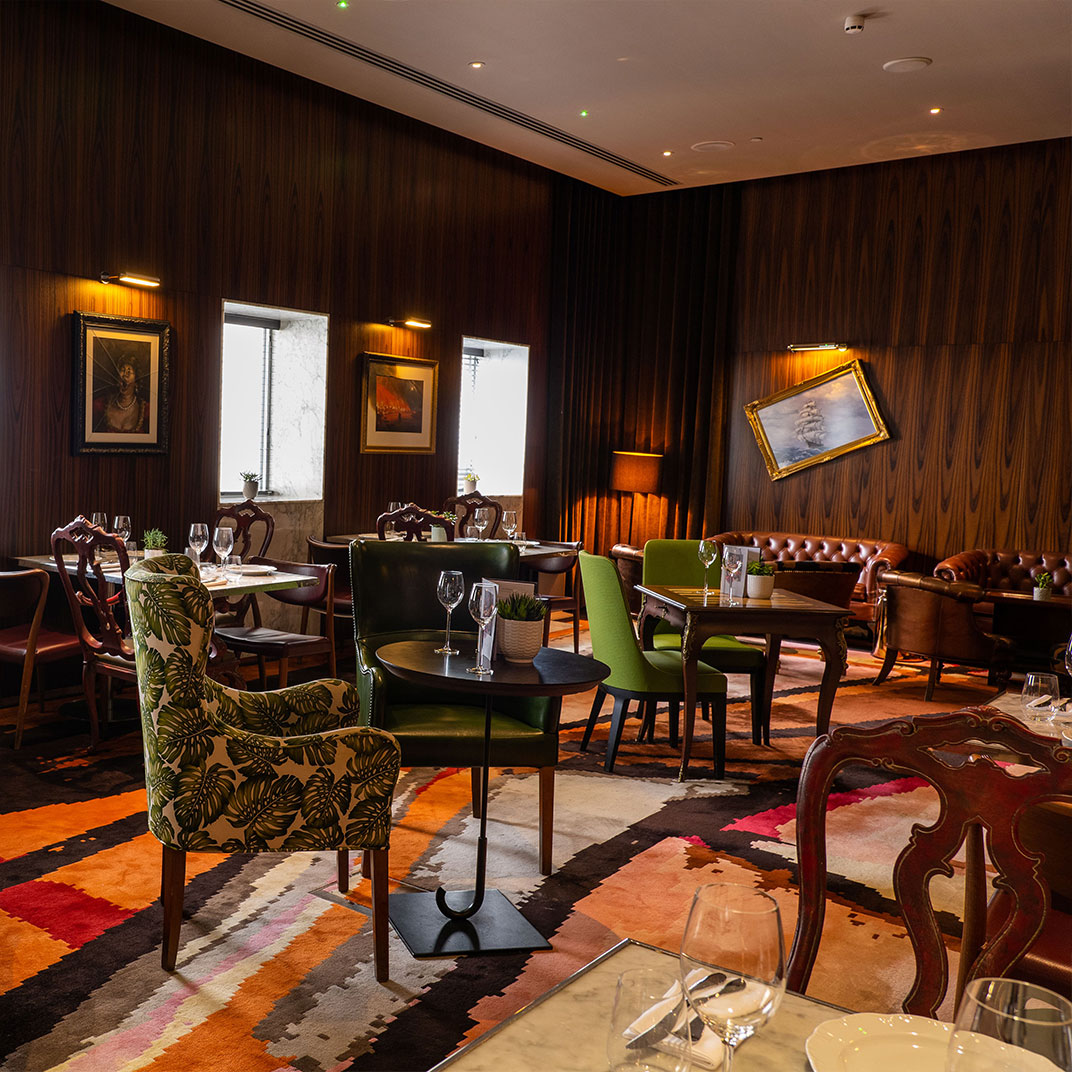
St Martins Lane Hotel
London, UK
St Martins Lane has set the bar for quite some time in London’s boutique scene, showcasing Philippe Starck’s trademark irreverence in stark contrast to the English urban-country-house norm. Tim Andreas built on that ethos — a potent blend of zany, baroque, and minimalist elements —with his interiors, an update on the tried-and-true “urban resort” theme.

Sofitel Legend The Grand Amsterdam
Amsterdam, Netherlands
Everything you’d expect from a hotel called the Grand, including a dignified old-world exterior, a location in the heart of the historic city center, every imaginable service and amenity, and a guestbook that reads like a social register, including captains of industry, heads of state, and Mick Jagger. In its first life, around 1400 AD, this majestic building was a convent; a hundred years ago it was the town hall.
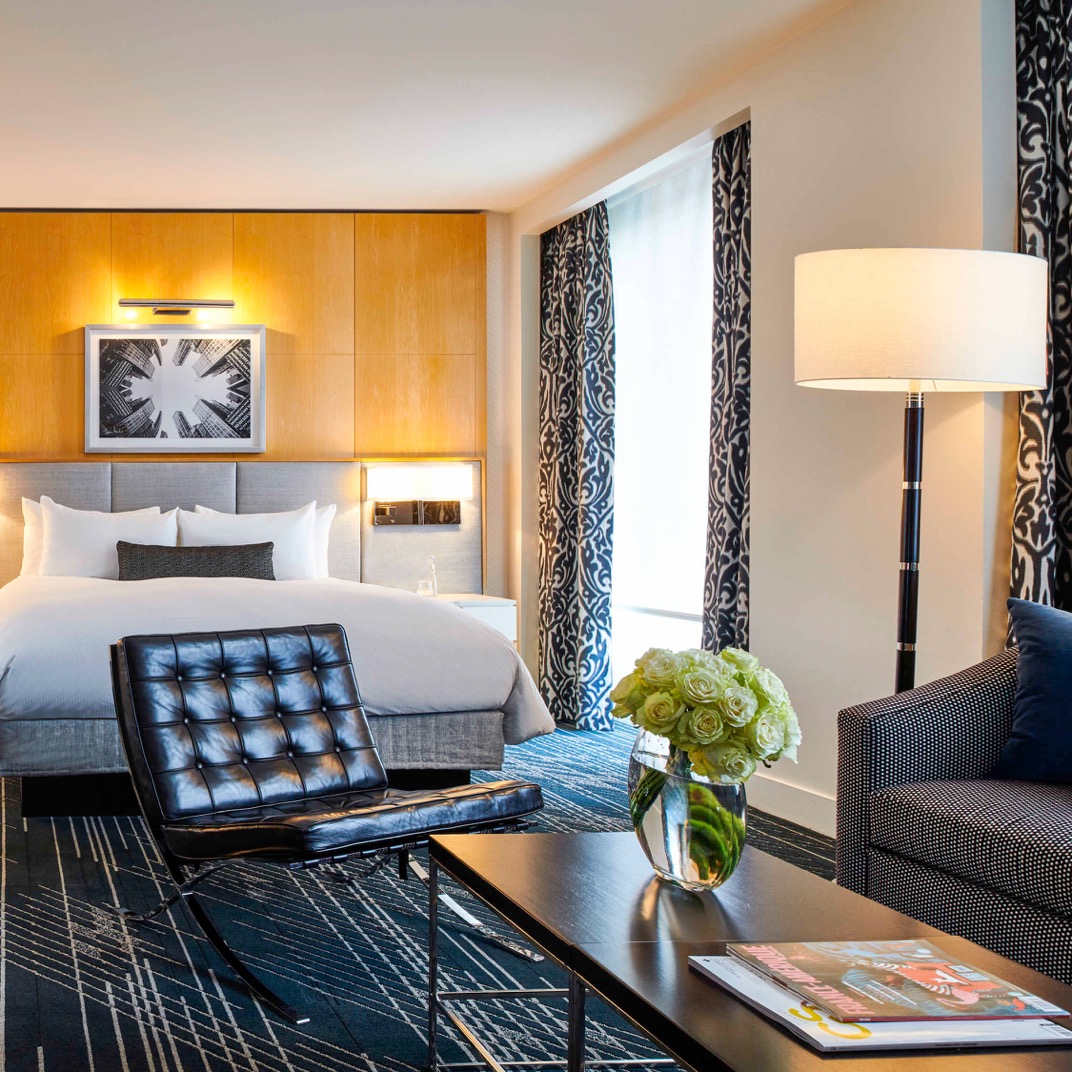
Sofitel Chicago Magnificent Mile
Chicago, USA
Often a new city hotel has to settle for adapting an existing building, shoehorning modern interior design into a prewar skyscraper or hiding boutique flash behind an unassuming facade. Not so the Sofitel Chicago Magnificent Mile. Architect Jean-Paul Viguier was allowed to start from scratch, and the result is striking — a dramatic bright white wedge-shaped building that looks for all the world like a giant ice breaking ship cutting its way across Chicago.
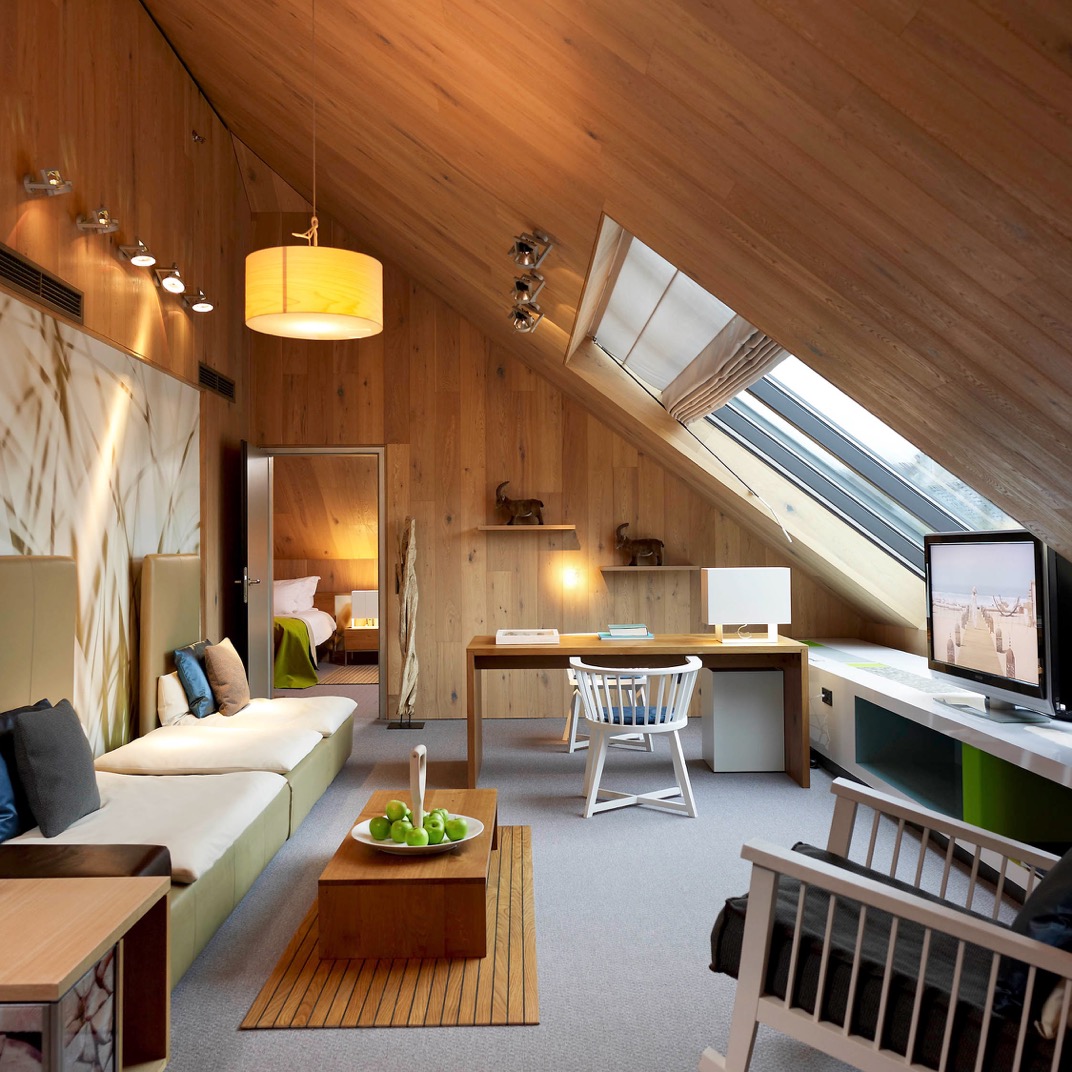
Sofitel Munich Bayerpost
Munich, Germany
It’s a bit like a microcosm of Munich itself, the Sofitel Munich Bayerpost: at first glance conservative, traditional as can be, but upon closer inspection surprisingly modern, even hip. The old post office building, just a hundred meters from the Munich city-center rail station, retains its classic facade, but the interiors have been completely re-imagined, and the result is an utterly contemporary and breathtakingly stylish luxury hotel.
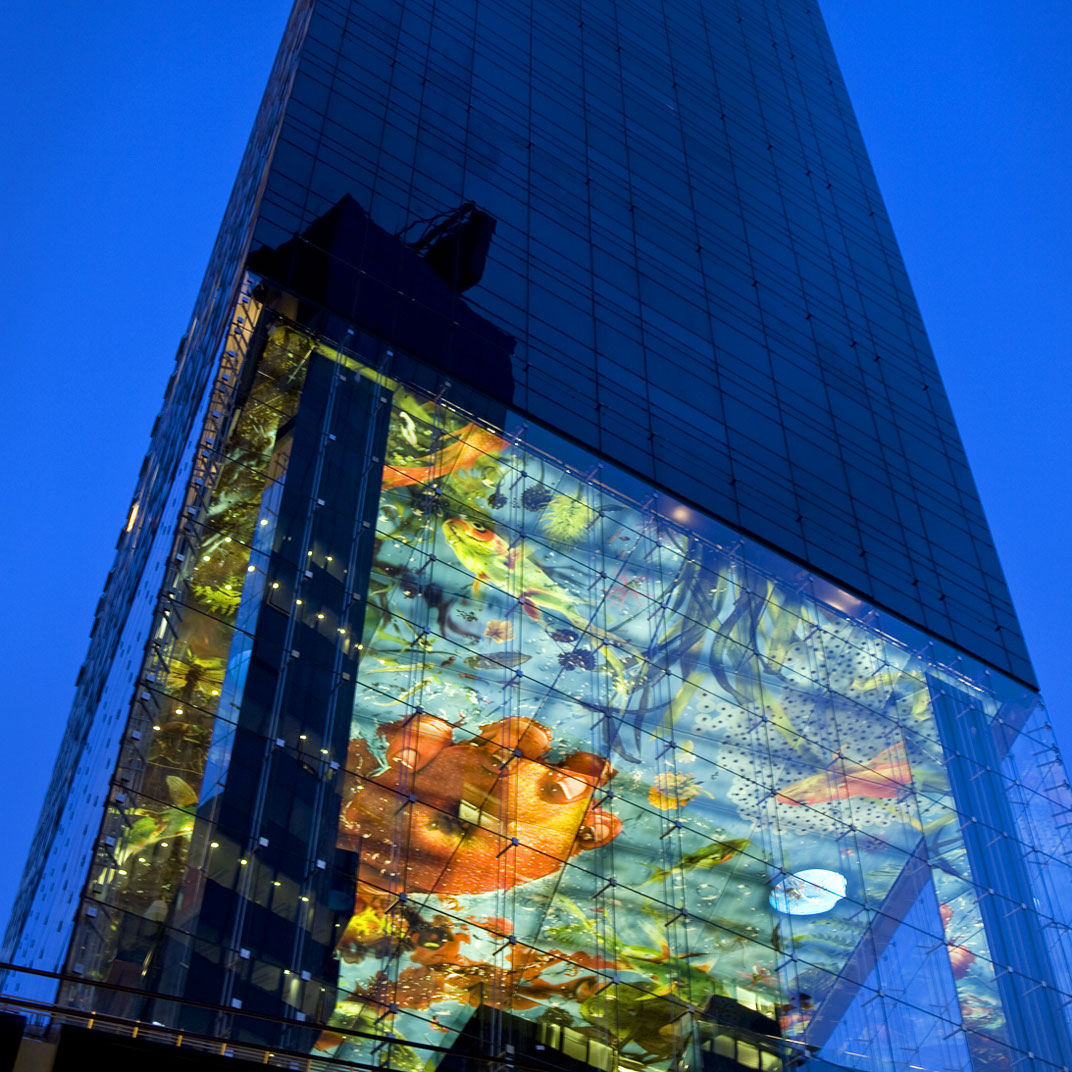
SO/ Vienna
Vienna, Austria
It’s not quite on the level of the Stephansdom cathedral itself, but architecture buffs will want to set aside some time for the SO/Vienna as well. Pritzker winner Jean Nouvel re-thought the typical hotel shape, changing the ho-hum rectangle into a celebration of geometry. Glass abounds, and the top-floor restaurant ceiling is clearly visible from street level, its riotous colors echoing the many-hued mosaics of the Stephansdom’s roof.

Sofitel Marseille Vieux Port
Marseille, France
Marseille might not be quite the rough-and-tumble port city its reputation would have you believe, but it’s closer to that than it is to, say, Dubai. Which is bad news if you want an utterly typical skyscraper-bound five-star hotel, but good news if you’re in the market for a lodging with personality. This is a city that’s overflowing with local character, a point that’s underlined by the fact that the closest thing it’s got to a contemporary luxury hotel is the Sofitel Marseille Vieux Port.

So/ Berlin Das Stue
Berlin, Germany
Hotels these days have a few problems in common; among them, all too often, is a distinct lack of grandeur. It’s not the sort of thing that springs naturally from what is typically little more than a box, jammed with as many beds as it can reasonably hold. That’s why, if it’s grandeur you’re after, you might be better off converting an existing building into a hotel, rather than building your own bedbox from the ground up. Das Stue, in Berlin’s Tiergarten district, is a case in point. This Thirties embassy building was built, at least in part, to convey a grand impression — and its atmosphere, after a massive architectural overhaul by Annette Axthelm and an interior renovation by the renowned Spanish designer Patricia Urquiola, is about as far as you can get from the boxes-and-boxes sameness of the typical contemporary hotel.
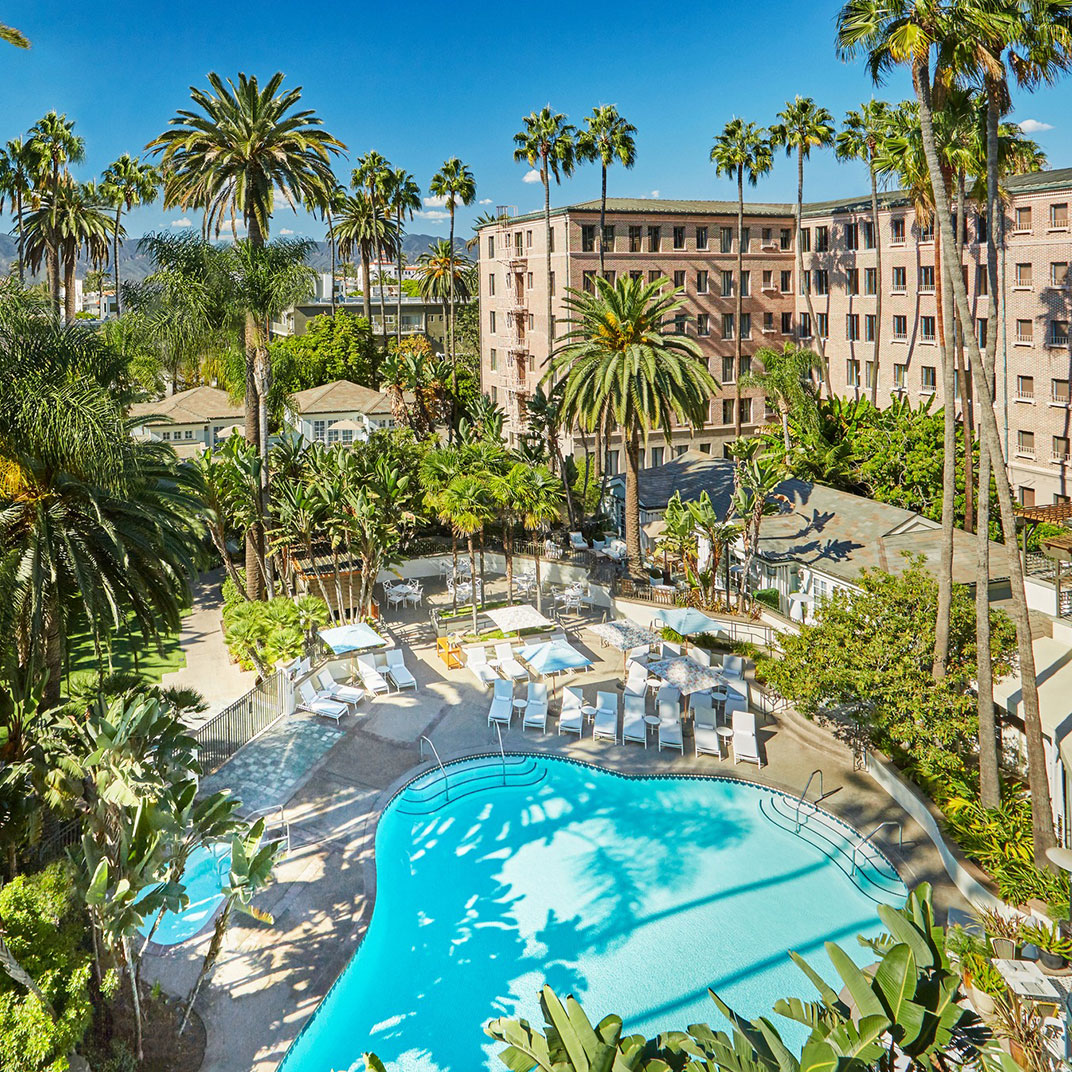
Fairmont Miramar Hotel & Bungalows
Santa Monica, California
This century-old luxury hotel has seen Santa Monica change from bohemian beach town to upscale enclave; and though it’s just a few minutes’ walk from the beach itself, it’s even closer to the mall that is Downtown Santa Monica. No matter — a stay at the Fairmont Miramar Hotel & Bungalows is what you make of it, and can be as private as you want it to be. The grounds themselves are planted with lush gardens overlooking the Pacific; the hotel’s own private beach club is accessible via a shuttle.
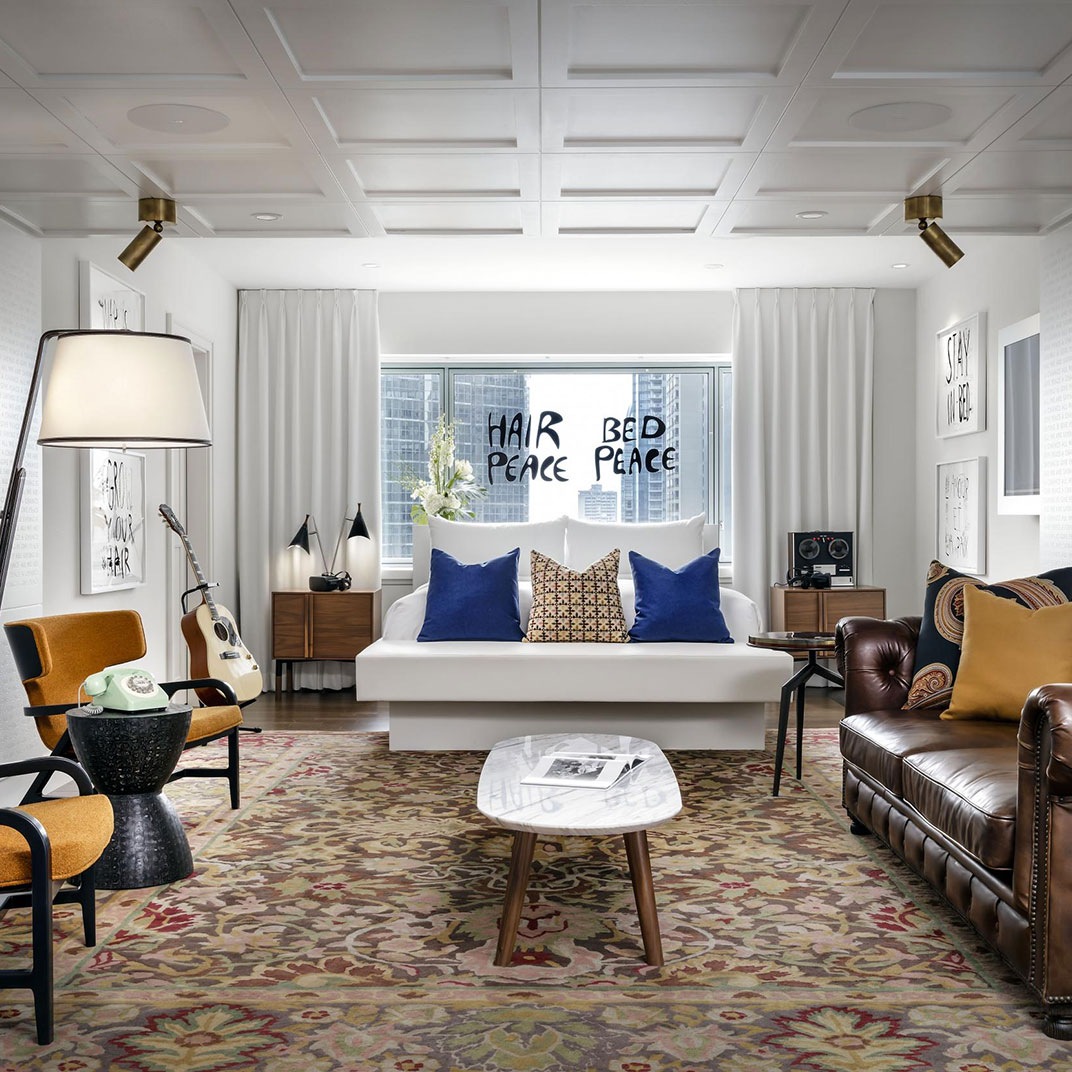
Fairmont The Queen Elizabeth
Montreal, Canada
Montreal’s Queen Elizabeth has seen some things; its most famous guest is the one who gave it its name, and John Lennon and Yoko Ono are not far behind. But in its 21st-century form it’s not content to rest on its historical laurels. After a thorough renovation it’s now the decidedly contemporary Fairmont The Queen Elizabeth, and it’s once more right where it belongs, in the top tier of Montreal’s luxury hospitality scene.

Fairmont Royal Palm Marrakech
Marrakech, Morocco
Marrakech is famous for its pocket-sized riad houses, hidden away in the bustle of the city-center medina — but more or less the opposite approach is taken by the Fairmont Royal Palm Marrakech. With its 134 villas, suites, and rooms, it’s twenty times the size of a riad, and spread as it is over an estate that spans nearly a square mile, it offers the kind of tranquility that nothing in the old city can match.
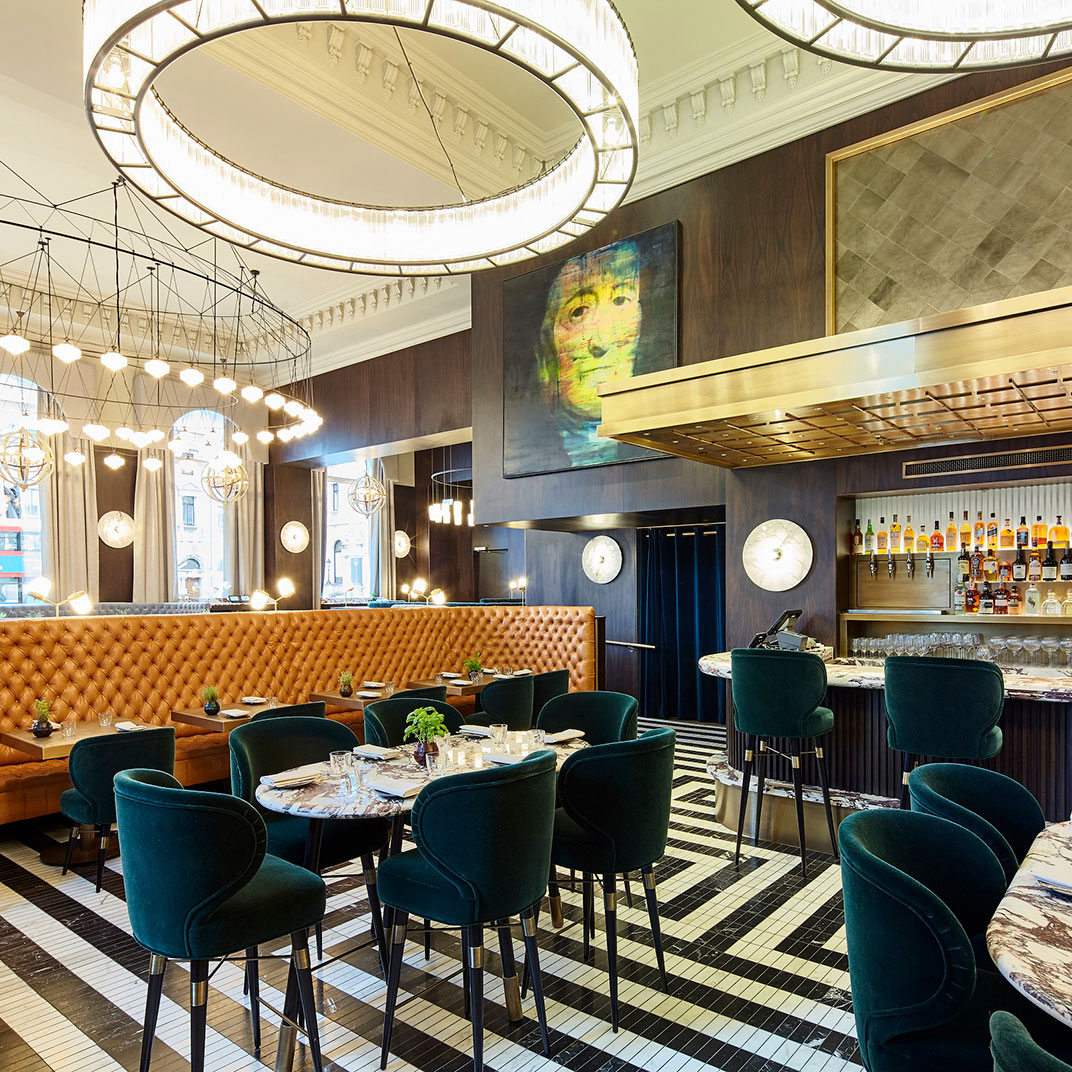
Sofitel London St James
London, UK
Prepare for a slight case of culture shock — the old Cox’s and King’s bank on the corner of Waterloo Place and Pall Mall, just around the corner from the Piccadilly Circus tube station, is now the place to go in London for a little taste of Paris. Today owned by the French Sofitel chain, it’s had a makeover courtesy of designer Pierre-Yves Rochon, and now sports a fine French brasserie.
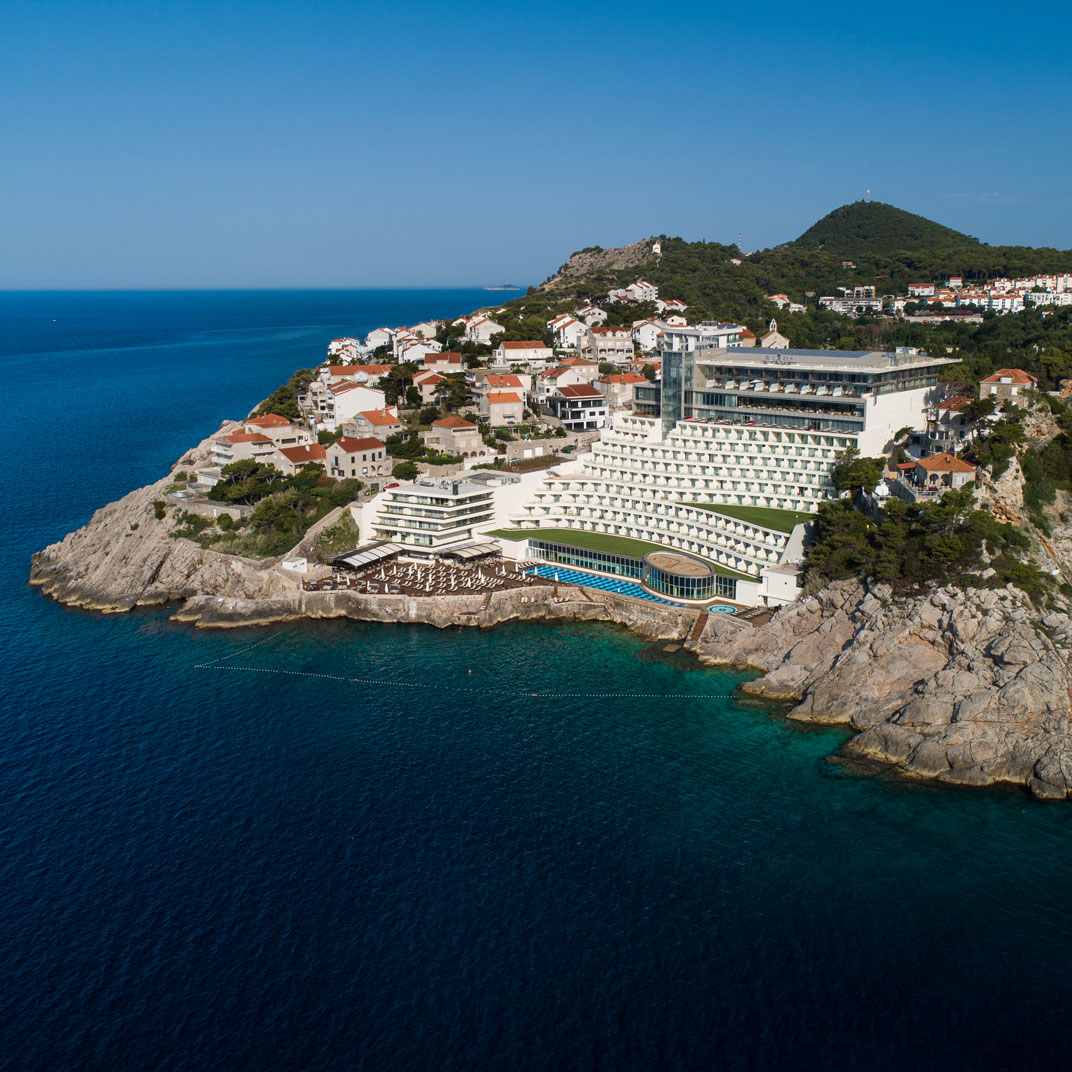
Rixos Premium Dubrovnik
Dubrovnik, Croatia
It’s perhaps not surprising in this ever more connected world that the Turkish-based Rixos luxury-hotel group should count the Dalmatian coast of Croatia among its most successful venues. Rixos Premium Dubrovnik stands on a cliffside overlooking the sea, a mile from the walled medieval old town, its rooms and suites cascading down the terraced slope like benches in a Roman theatre. It’s an impressive site, to be sure, and makes for impressive views — against such a backdrop, the hotel itself could get away with shirking some of its responsibilities, and it’s to its great credit that it doesn’t.
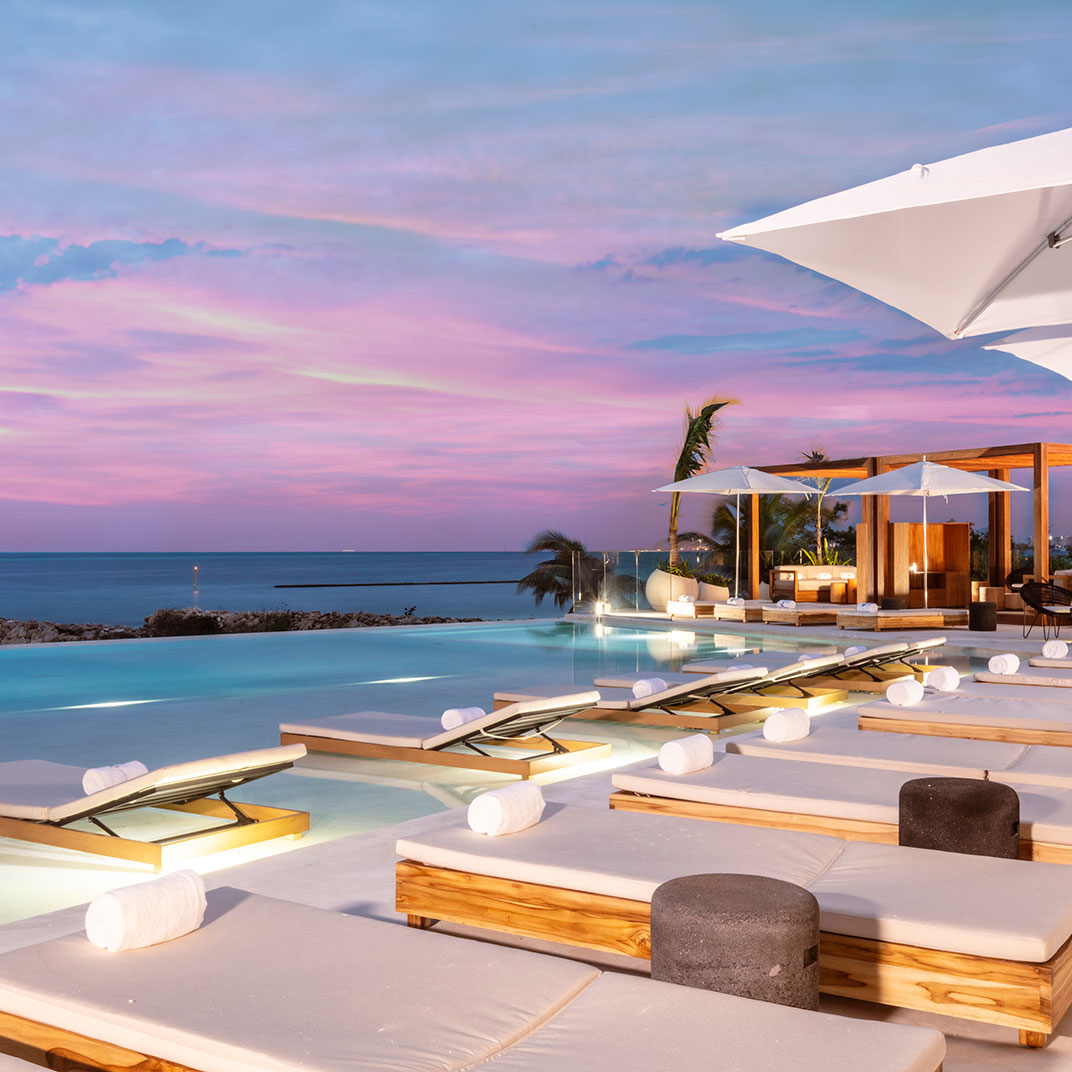
SLS Cancun
Cancun, Mexico
At this late date, Cancún, as a destination, has been pretty well discovered. But not every successful hotel experience requires an element of adventure or exploration. In fact, in a hotel like the SLS Cancún, the surroundings are somewhat beside the point — aside, that is, from the impeccable white-sand beach and the turquoise waters of the Caribbean, stretching out to the horizon. This hotel, to put it simply, aims to bowl you over with contemporary design and state-of-the-art luxury, and provide a memorable, self-contained experience — and you can take its inclusion here as proof we consider it a success.
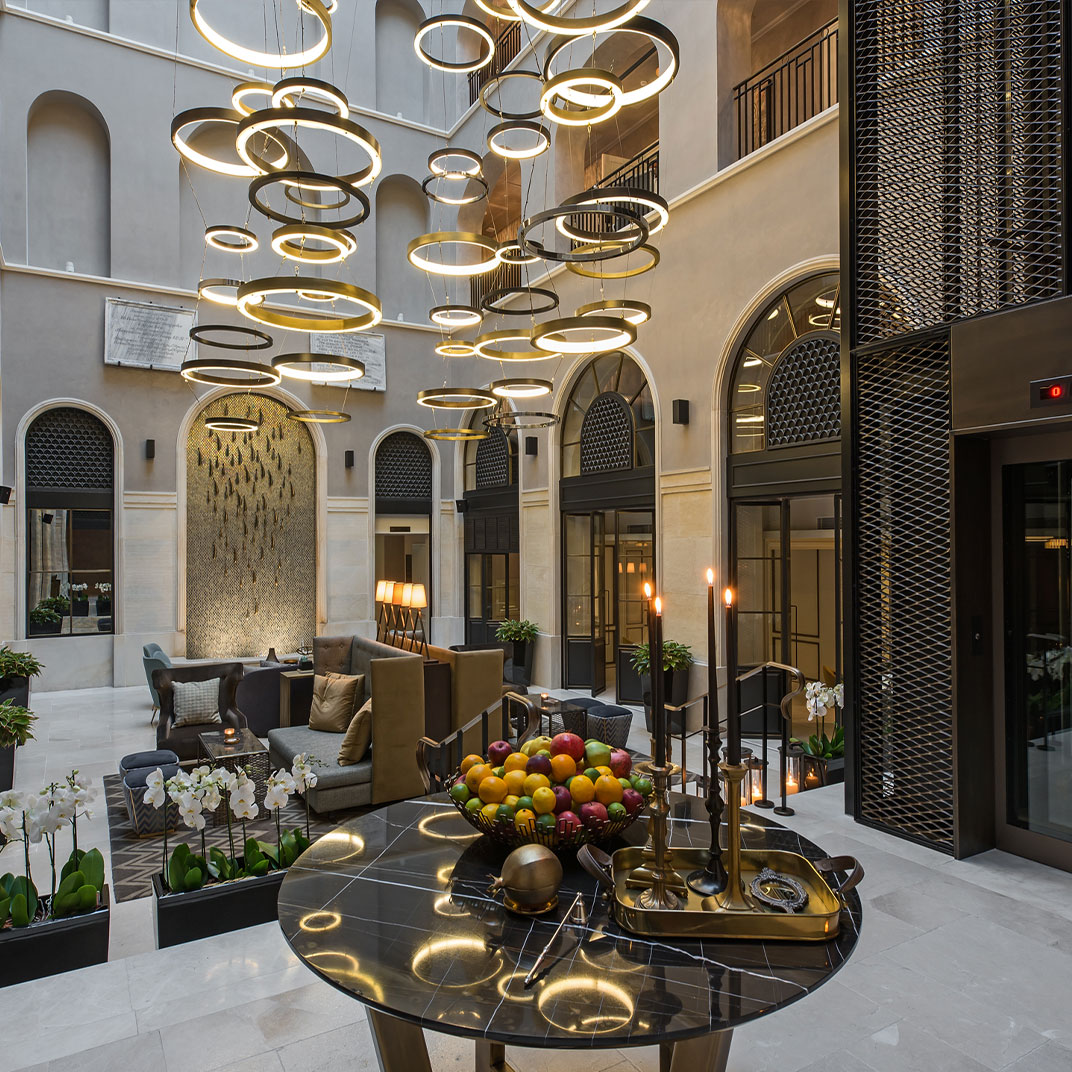
10 Karakoy Istanbul
Istanbul, Turkey
The waterfront district of Karaköy is one of the city’s oldest, but it’s also the site of quite a lot that’s exciting about life in present-day Istanbul — and that includes the stunning 10 Karaköy. This luxury boutique hotel is fashioned from a neoclassical building that, at a mere 150 years old, is a relative newcomer by local standards. And after its reimagining at the hands of architect Sinan Kafadar, it’s a masterful marriage of the classic and the contemporary.

Tribe Paris Batignolles
Paris, France
Batignolles, in the 17th, is off the usual path for visitors, and that’s by design — a departure from the old familiar locations gives Tribe Paris Batignolles license to experiment with the typically tradition-bound Parisian hotel formula. Aesthetically, it’s free from any pressure to conform to Haussmannian ideals, and takes its interiors in a more modern, industrial-chic direction. And with a little more space to spread out, it doesn’t have to squeeze every square foot into its accommodations; its communal lounge spaces are among its greatest strengths.


